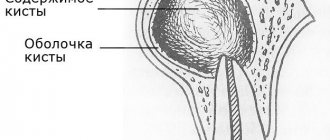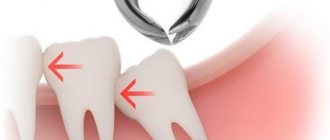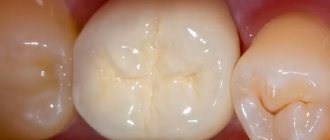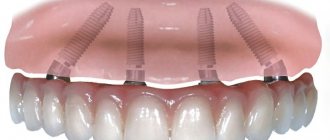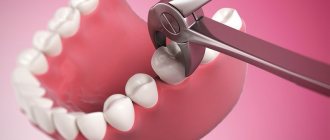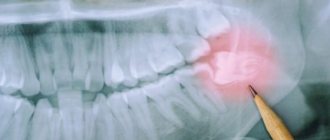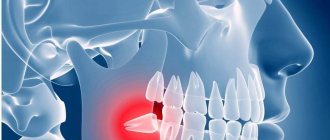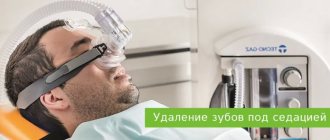Each of us has at one time or another faced the need for dental treatment or removal.
Do not be afraid of these procedures, as they are absolutely painless, thanks to various methods of pain relief.
You should understand the questions of what is tooth extraction and anesthesia?
Tooth extraction is a surgical micro-operation, which is prescribed when treatment is impossible. The procedure is performed under anesthesia, sedation or general anesthesia, which allows the removal to be performed comfortably for the patient.
Proper oral care after tooth extraction
To prevent unwanted consequences from occurring, it is important not to do the following:
- touch the wound with your tongue or use other foreign objects for this,
- rinse your mouth generously in the first two days,
- make sudden movements with the facial muscles,
- plunge into hot water or rinse with it,
- Hard to work,
- eat food in the first 3 hours that follow the procedure, it is permissible to drink, but refrain from boiling water.
- You should also abstain from cigarettes at this time,
- alcohol is contraindicated within 24 hours after surgery. If your doctor prescribes the use of antibiotics, you should not drink alcohol until the end of the course of therapy.
Types of anesthesia for tooth extraction and methods of its behavior
Based on the depth of anesthesia, anesthesia is divided into the following types:
- surface;
- easy;
- full;
- super deep.
For dental treatment under anesthesia, only superficial and light anesthesia is used in dentistry. While the last two types are used for complex operations, for example, for maxillofacial injuries.
Anesthesia is carried out in two main ways:
- inhalation - you inhale sprayed particles of the drug through a special mask;
- intravenously - using a regular injection.
High-quality anesthetic drugs promote restful drug-induced sleep and recovery from it without any complications. Modern anesthetic medications are highly safe and suitable even for patients with allergies. They do not cause side effects or addiction and are easily eliminated from the body.
A cold compress will prevent swelling
Immediately after the manipulations, it is necessary to apply a cold compress, since after tooth extraction the cheek may swell.
To do this, take some chilled meat products or ice and apply it, after wrapping it in a cloth. Such actions will help to minimize or even eliminate swelling of the soft areas of the face that can form in the event of a serious intervention.
It is recommended to keep the ice for about 5 minutes, apply it 3-4 times, taking a break between applications. It is important to apply cold immediately after surgery, since further this action will not bring the desired effect. Under no circumstances should you use a warm compress or warm the tissue in any other way - thoughtless intervention can cause suppuration.
If your gums bleed after tooth extraction
You can stop bleeding in a number of effective ways. In most cases, this disease affects people with high blood pressure with hypertension or patients who have had a large vessel damaged.
It is worth noting that due to psychological overload and stress during activities, even in people with normal health, blood pressure may rise. The first step is to apply a tightly rolled piece of sterile bandage to the bleeding site, and then measure the patient’s blood pressure. If it is elevated, you need to resort to medications.
With increased blood pressure, the chance of hematoma and blood appearing after tooth extraction increases. This development of events is dangerous due to suppuration, which will then have to be opened, and bleeding can cause dizziness and weakness.
If bleeding appears several hours after removal, you should not wait for the situation to normalize, but seek medical help.
Diabetes mellitus during tooth extraction
If a person has this disease, it is recommended to measure their sugar levels immediately after surgery. Tension leads to the production of adrenaline, which can increase the rate. By measuring sugar, a person will know about his condition and will be able to prevent side effects.
If a gauze pad is placed on the gum
A gauze swab is placed on the hole if it is etching. In other situations, the use of this remedy is undesirable, as it can provoke inflammation. As the tissue is removed, the blood clot that has formed in the socket is also removed.
If the tissue lining is on the wound, it is necessary to carefully remove it after a certain period of time after removing the tooth. A tampon that has absorbed a certain amount of liquid automatically becomes a breeding ground for a wide range of bacteria. You should not keep it in your mouth for a long time to prevent the appearance of inflammatory processes in the hole that remains after tooth extraction.
Antiseptic rinses for suppurations
There is no need to rinse your mouth intensively; instead, use “baths”. In order not to disturb the damaged tissues, take a special anti-inflammatory solution into your mouth, keep it inside, and then spit it out.
Advantages of tooth extraction under general anesthesia
- Anesthesia slows down the body's reactions, due to which the pain is completely relieved. Therefore, all the dentist’s procedures for removing teeth will be completely painless for you.
- Many sensitive patients put off visiting a surgeon until dangerous complications develop simply because they are afraid of the mere sight of surgical instruments. If teeth are removed under general anesthesia, you will not see how the process will occur, but will only wake up when it is over.
- Even for a psychologically stable person, tooth extraction is a stressful situation that negatively affects the body. For example, patients often experience increased blood pressure during this procedure. However, if the operation is performed under general anesthesia, your nerves will not be damaged.
- While the anesthesia is in effect, the dentist will remove the necessary teeth and perform the necessary manipulations, which could take several visits. He will perform all actions carefully and efficiently, which will reduce the risk of complications.
Interesting fact!
According to data from various media sources, at least 2% of adults and 6 - 8% of children, for various reasons, do not have the opportunity to undergo routine tooth extraction using local anesthesia.
Baths should be carried out if:
- an incision was made to expose the gumboil;
- the tooth was removed due to inflammatory processes;
- there are harmful deposits on the teeth and caries;
- removal of the root of a tooth with caries
For procedures with baths, you can use an aqueous solution of chlorhexidine with a concentration of 0.05%. This drug is inexpensive, it can be purchased ready-made, it has excellent antiseptic effects, and tastes bitter. Such procedures must be carried out 3 times a day. The solution must be kept in the mouth for 1 minute.
Indications and contraindications
The use of anesthesia in each specific case must have serious medical reasons, so it is used infrequently. In addition, the cost of tooth extraction under general anesthesia is quite high. If you are simply afraid of surgery, but you only need to remove one front tooth, then in this case it is advisable to use light sedatives and carry out tooth extraction under local anesthesia. If the surgeon’s task is much more complex and the volume of work is large, then general anesthesia is appropriate.
Indications
The following main indications exist for the use of general anesthesia during tooth extraction:
- allergy to local anesthetics;
- panic fear of treatment;
- increased blood pressure (hypertension) due to stress;
- a gag reflex in the patient, which prevents the doctor from performing the operation;
- large volume of manipulations;
- inability of a patient with disabilities to sit in the dental chair.
Contraindications
Speaking about contraindications to tooth extraction under general anesthesia, you should be guided by the list of factors presented below that may cause refusal of this procedure:
- exacerbation of chronic pathologies;
- diabetes mellitus in the stage of decompensation;
- acute heart failure;
- period up to six months after myocardial infarction;
- heart defects;
- infectious diseases;
- anemia;
- epilepsy;
- pathologies of the respiratory system.
If your gums hurt after tooth extraction
Tooth extraction leads to damage to soft tissues, which contain a large number of nerves. The doctor performs the procedures under local anesthesia, so the patient feels discomfort only in one thing - the need to spend a certain amount of time with his mouth wide open.
When the analgesic effect ends and the tooth has already been removed, the pain returns. Usually they are of a “aching” nature and do not fundamentally interfere with normal life activities. But in some cases the pain can be intense.
If the tooth extraction was not caused by inflammatory processes, you can avoid the use of painkillers. If pain relief is necessary to avoid severe pain after tooth extraction, it is recommended to take an analgesic until the anesthetic wears off.
Using painkillers after tooth extraction
If you experience intense pain, you can resort to using “Ketans”; The medicine is dispensed by pharmacists in pharmacies only with a prescription - this is due to the presence of side effects. Severe pain can occur during complex and lengthy medical intervention, especially if it was accompanied by drilling of the bone around the tooth, or if the operation was performed poorly, unprofessionally and traumatically.
“Ketorol” (an analogue of “Ketanov”), “Analgin” (will help reduce mild pain syndrome), “Spazmalgon” (in addition to the analgesic effect has an antiseptic effect), “Baralgin” (a drug that contains “Analgin” in its composition).
Options for local anesthesia of a sore tooth
Local anesthesia can be conditionally classified into the following groups:
- application;
- infiltration;
- conductor;
- intraosseous;
- intraligamentary.
Let's look at each in more detail.
Appliqué
This type of anesthesia for tooth extraction can only be used if a simple treatment is planned or if the gum area where the anesthetic will be injected needs to be made insensitive. More often, the application technique is used when providing dental care to young children. Baby teeth do not have branched roots and, when they are already thoroughly loosened, before pulling them out, it is quite possible to limit yourself to applying a local anesthetic. The latter usually contains lidocaine or benzocaine.
Infiltration
A very common option for pain relief. Involves injecting the medication directly into the gums. As a result, the treated area, part of the cheek, lip and tongue become numb.
The technique is suitable if the therapy is simple and takes little time, for example, when pulling out baby teeth. It is offered to adults if the unit is already highly mobile and can be easily grasped with forceps.
Anesthesia wears off after tooth extraction within three to four hours. Then the usual sensitivity gradually returns.
Conductor
A more serious option for pain relief. It is used if several teeth need to be removed at once. This is possible if preparation for prosthetics is underway. The doctor makes an injection into the gum and injects an anesthetic. But the needle is installed in such a way that after the injection, not only individual nerve impulses are blocked, but the peripheral branches of the nerve. Due to this, a large area is covered.
Taking into account exactly where the medicine is injected and which tooth is to be removed, conduction anesthesia is divided into:
- Mental. Suitable if you need to pull out canines, incisors, premolars.
- Tuberal. Only used when working with molars.
- Thorusal. It is used if several lower units located in different zones are to be pulled out.
To select the most appropriate anesthesia option for tooth extraction, the doctor examines the oral cavity. In rare cases, the injection is given extraorally. Then the needle is inserted into the gum tissue directly through the cheek.
Intraosseous
With this type of anesthesia, an injection is made directly into the bone tissue. Using a long needle, they reach the bone plate that forms the frame for the tooth. As a result, the surrounding soft tissues remain sensitive and do not go numb.
The intraosseous technique is indicated if it is necessary to remove unerupted and incorrectly located units of the oral cavity. Sometimes it is used when operating on the lower jaw, since it is easier to perform such technically complex anesthesia.
It is important to understand that intraosseous anesthesia renders only the treated tooth numb. If its roots go very deep or intertwine with neighboring ones, it makes sense to use another option for pain relief.
Intraligamentary
The anesthetic is injected directly into the tissue, and not into the nerve, that is, the work is carried out exclusively with the periodontal space. The injection is given under great pressure, but it causes almost no pain.
The intraligamentary technique is optimal if it is necessary to remove premolars, molars, incisors and canines in a child. Sensitivity is lost almost immediately.
Within a minute after the injection, the unit becomes “frozen.” The freezing effect lasts for about 20 minutes. This is quite enough to perform a simple surgical operation.
Wisdom tooth removal
Wisdom teeth are the painter or chewing teeth located at the end. When chewing, they do not play a significant role; the structure is no different from ordinary teeth.
There are several generally accepted indications for removal:
- ingrowth of roots into the maxillary sinus,
- partial eruption
- facial neuralgia,
- inclined or lateral position,
- caries damage.
When removing a wisdom tooth, painkillers are used to relieve pain. Consequences after the operation may occur depending on the complexity of the operation, surrounding tissues, location, and access to the tooth.
Negative consequences may occur if the patient does not adhere to the doctor's orders. Baths of soda and herbal decoctions will also help alleviate the condition after removal. It is forbidden to rinse; it is important to preserve the blood clot, which protects the wound from infection.
Contraindications
Sometimes doctors cannot use anesthetics when extracting teeth. This is due to the contraindications of the drugs themselves and the individual characteristics of the patient’s body.
Among the most common contraindications:
- severe diseases of the cardiovascular system (stroke, myocardial infarction, after which less than six months have passed);
- allergy to compounds included in the painkiller.
If a patient has an endocrine disease that occurs in a decompensated form, he needs to go to the hospital for removal.
It is important to know . To avoid complications after using anesthesia, you need to inform the dental surgeon in advance about all existing chronic diseases, allergies, and medications used.
In what cases is it necessary to remove the nerve of a tooth?
Removing the nerve from a tooth kills it. Almost no nutrients are supplied, causing it to become darker and weaker. During treatment, dentists try to keep the dental nerve alive, but sometimes they have to take forced measures to put the oral cavity in order.
Nerve removal is necessary if:
- Deep caries.
If the disease has destroyed almost the entire tooth, there is nothing to save; the main thing for the doctor is to prevent further destructive process.
- Prosthetics.
To install the prosthesis, an incision must be made in the pulp chamber. This is especially necessary in situations where teeth grow at an inclined angle.
- Incorrect treatment in the past.
This can happen if during treatment the doctor resorted to opening the pulp chamber. In this case, it is necessary to partially remove the nerve.
- Mechanical damage.
Injury can lead to chips in the enamel where the nerve is located. If the front teeth are damaged, the nerve is not completely removed.
Antibiotic therapy after removal of unhealthy teeth
Antibiotics are prescribed by the attending physician - dentist. Drugs are prescribed in case of difficult extraction, to prevent the risk of complications if the tooth was removed due to inflammatory processes.
The drug usually prescribed is Lincomycin 0.25. Take capsules after tooth extraction for 5 days, 2 capsules 3 times. If purulent inflammation is present, the antibiotic is prescribed as intramuscular injections.
Those who suffer from intestinal and stomach disorders can take antibiotics in effervescent forms, for example, Unidox Solutab and Flemoxin Solutab.
Pros and cons of local anesthesia in dentistry
Among the advantages of local anesthesia:
- affordable price;
- lack of significant impact on the patient’s body;
- low risk of adverse reactions;
- the ability to treat and remove baby and molars without pain.
The disadvantages include:
- the possibility of developing allergies, including anaphylactic reactions, laryngeal edema;
- low effectiveness if there is a pronounced inflammatory process in the maxillofacial area.
If the anesthesia method is chosen correctly, the removal will take place quickly and without complications. Trust your health to experienced dentists. Then even the most complex dental problems will be solved quickly and without pain.


